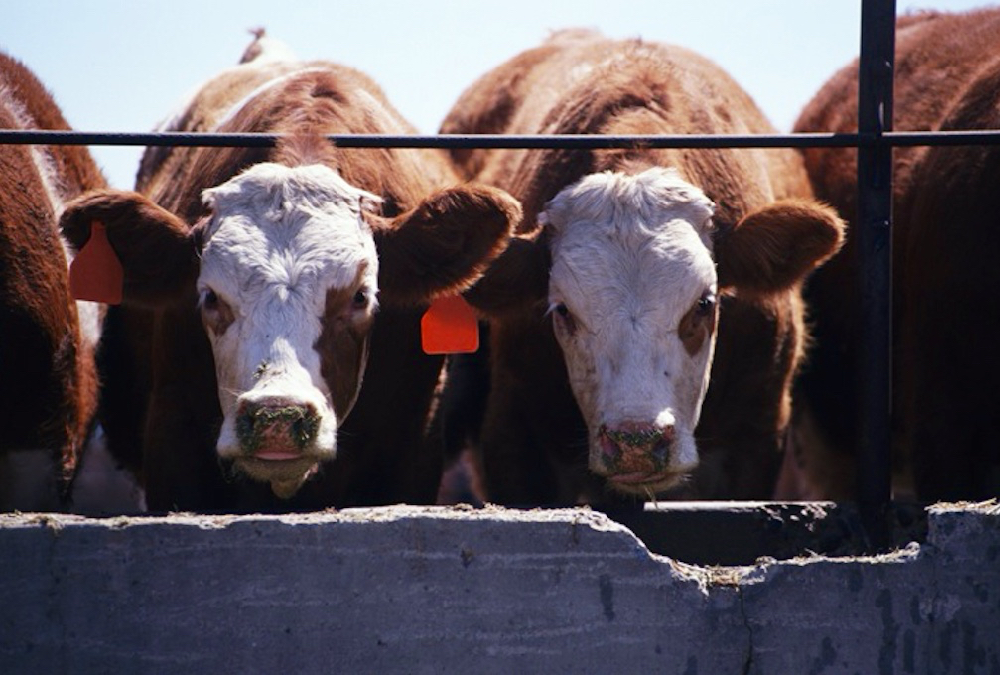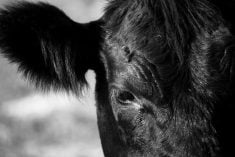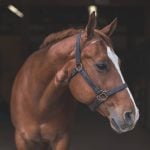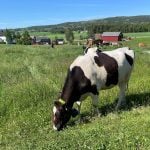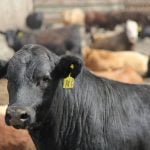Only a few calls in practice were totally disheartening. Grain overload in a group of pregnant brood cows three months from calving at -25 C turned out to be one of the worst. By the time producers noticed signs of grain engorgement, cows were often really sick: staggering, down and unable to rise, dehydrated, rumen extended with watery contents, diarrhea, depressed, metabolic acidosis, no movement of the fore stomachs. Some were dead.
Many animals at this stage fail to survive despite extensive treatment. Diagnosis is confirmed by a rumen pH below 5.5 (highly acidic). Many animals go down and die despite treatment, including IV fluids, emptying the rumen by rumenotomy and flushing with water to remove the offending material. Neutralizing rumen acid with baking soda-type products administered by stomach tube plus high levels of antibiotics to prevent adverse sequelae from chemical rumenitis sometimes helps. By all definitions, grain overload in multiple cows is a “wreck.”
It’s much easier to write about treatment than get it done effectively. Many animals die. Doing rumenotomies or conducting gastric lavage is a Herculean task and few farms or animal clinics have the water supply required or time to tend to more than a few animals. Salvage by slaughter is one option for individual animals.
Read Also
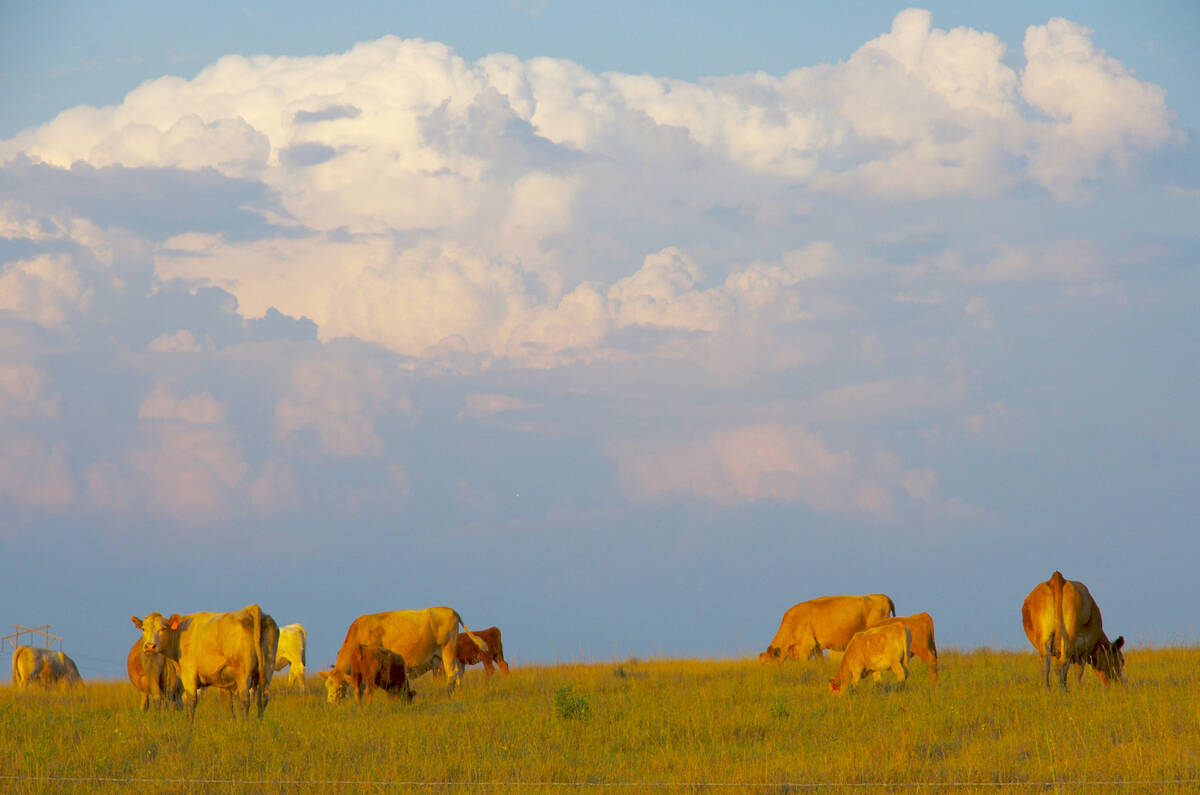
Canadian Beef Check-Off Agency reports on investments and activities
The check-off agency’s work behind the scenes is what ensures cattle check-off dollars are invested wisely, accounted for transparently and deliver measurable value back to producers and importers.
Grain overload is 100 per cent preventable. Ensure there are no leaks in granaries, that piles of barley and wheat in temporary storage on fields are cleaned up properly and that chop bins are securely locked.
Grain overload is 100 per cent preventable, but an absolute bugger to treat. A poor to grave prognosis characterizes most cases. Learning what transpires after cattle consume relatively small amounts of grain, if animals are not conditioned to it, can be a cruel lesson. Cattle on forage diets may develop classic overload by consuming as little as 10 kg. To understand why treatment often fails, it’s useful to know about the disease and the metabolic consequences.
Grain, particularly wheat and barley in this part of the world, are common feedstuffs in finishing feedlot rations. Both are highly fermentable carbohydrates. Cattle given free access to these grains without a conditioning period result in severe laminitis (inflammation of the lamina or supporting structures within the hooves) and crippling lameness, often chronic. Ultimately this creates abnormal hoof growth.
The etiology of laminitis is multifactorial. Several researchers have looked at the cause and consequences of laminitis in beef, dairy and equine species. The consumption of excess fast-digesting carbohydrates and low ruminal pH (acidosis) are considered the main related factors in cattle.
Nutrition is the main factor that ultimately reduces ruminal pH. The initial systemic metabolic insult is provoked by ruminal acidosis. Vascular dysfunction within the hoof leads to degeneration of the laminar region and loss of structural integrity. Consequently, the distal phalanx (triangle-shaped bone in the digit) is displaced, compressing the sole, leading to the development of lesions in the horn capsule, hemorrhage and white line deformities.
Ruminal acidosis in cattle on finishing rations in feedlots often occurs as subacute ruminal acidosis and produces various degrees of laminitis.
With the onset of ruminal acidosis, several inflammatory substances are released, such as lipopolysaccharides (endotoxins), which, in turn, start an inflammatory cascade within ruminal epithelium and the bloodstream. Endotoxins damage blood vessels, especially in the hoof microcirculation.
Acidosis drastically changes the population of ruminal bacteria from gram-positive to gram-negative, which contributes to the development of acidosis by gram-negative bacteria releasing components of their cell wall. These changes disrupt normal fermentation, lactic acid builds and an acid environment quickly develops.
Rumen lining is damaged, leading to leakage of pathogenic substances from the rumen into the bloodstream. Research into the diversity of gram-negative bacteria in the rumen and changes in the bacterial community during ruminal acidosis could be used to identify which gram-negative bacteria are associated with lipopolysaccharide release in the rumen. By identifying and targeting ruminal bacteria with possible pathogenic lipopolysaccharides, nutritional strategies could be created to overcome, or at least minimize, ruminal acidosis.
Cattle suffering from acidosis can look a lot like cattle with respiratory disease. They show a lack of appetite, slow movement, increased heart and breathing rates and elevated body temperature. In mild cases of acidosis, cattle will appear to have a full rumen. They may act uncomfortable due to a sore belly and will probably have grey-green pasty to soupy diarrhea. In more severe cases, dehydration is severe and animals lie down. The abdomen is markedly distended, and animals are noticeably uncomfortable (groaning and grinding of teeth). Diarrhea is profuse and yellow-green, which progresses to watery, often foamy diarrhea, with a pungent odour. Death commonly follows severe cases. Cattle that recover from acidosis often develop liver abscesses, laminitis or other secondary diseases.
Changing from one roughage source to another or from a high-grain, concentrate diet to a roughage diet is usually well-tolerated; the opposite is not true.
Cattle are an amazing animal species for many reasons. One of the most important reasons is that they thrive on a wide variety of diets, converting feedstuffs to meat. Cattle can eat grains, byproducts of grain processing and waste from human food production. But if diets are changed without an adaptation period, serious health problems often follow.


